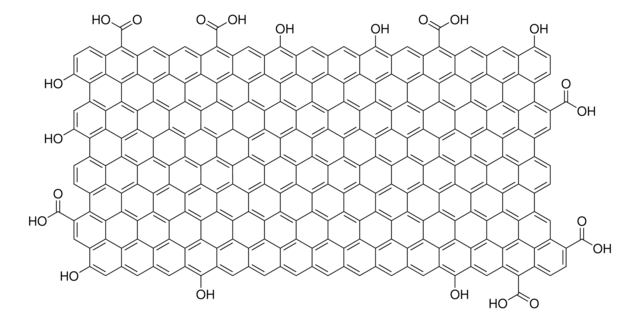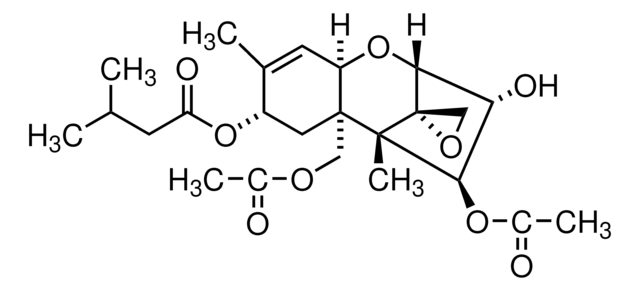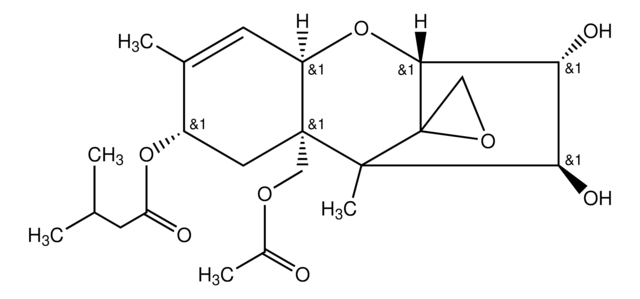32928
15-Acetyldeoxynivalenol
reference material
Synonym(s):
15-O-Acetyl-4-deoxynivalenol from Fusarium graminearum, 15-Acetoxy-3α,7α-dihydroxy-12,13-epoxytrichothec-9-en-8-one
About This Item
Recommended Products
grade
analytical standard
reference material
shelf life
limited shelf life, expiry date on the label
technique(s)
HPLC: suitable
gas chromatography (GC): suitable
application(s)
cleaning products
cosmetics
food and beverages
personal care
format
neat
storage temp.
−20°C
SMILES string
CC(=O)OC[C@]12[C@H](O)C(=O)C(C)=C[C@H]1O[C@@H]3[C@H](O)C[C@@]2(C)[C@]34CO4
InChI
1S/C17H22O7/c1-8-4-11-16(6-22-9(2)18,13(21)12(8)20)15(3)5-10(19)14(24-11)17(15)7-23-17/h4,10-11,13-14,19,21H,5-7H2,1-3H3/t10-,11-,13-,14-,15-,16-,17+/m1/s1
InChI key
IDGRYIRJIFKTAN-HTJQZXIKSA-N
Looking for similar products? Visit Product Comparison Guide
General description
Application
- Pig urine and maize samples by high performance liquid chromatography-mass spectrometry (HPLC-MS).
- Milk samples by liquid chromatography combined with tandem mass spectrometry (LC-MS/MS).
Signal Word
Danger
Hazard Statements
Precautionary Statements
Hazard Classifications
Acute Tox. 2 Oral - Acute Tox. 3 Dermal - Acute Tox. 3 Inhalation
Storage Class Code
6.1A - Combustible acute toxic Cat. 1 and 2 / very toxic hazardous materials
WGK
WGK 3
Flash Point(F)
Not applicable
Flash Point(C)
Not applicable
Personal Protective Equipment
Regulatory Listings
Regulatory Listings are mainly provided for chemical products. Only limited information can be provided here for non-chemical products. No entry means none of the components are listed. It is the user’s obligation to ensure the safe and legal use of the product.
JAN Code
32928-5MG:
32928-5MG-BULK:
Choose from one of the most recent versions:
Already Own This Product?
Find documentation for the products that you have recently purchased in the Document Library.
Customers Also Viewed
Our team of scientists has experience in all areas of research including Life Science, Material Science, Chemical Synthesis, Chromatography, Analytical and many others.
Contact Technical Service










